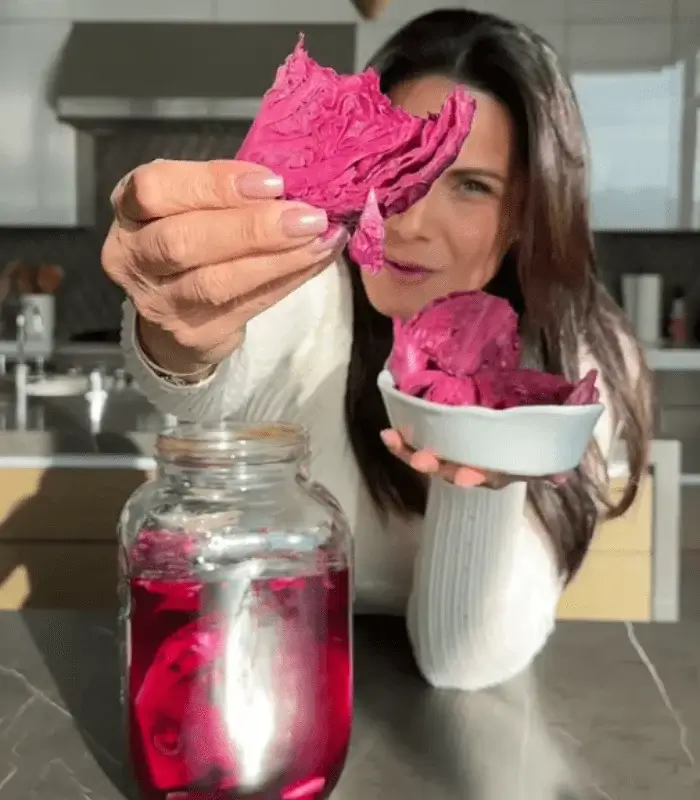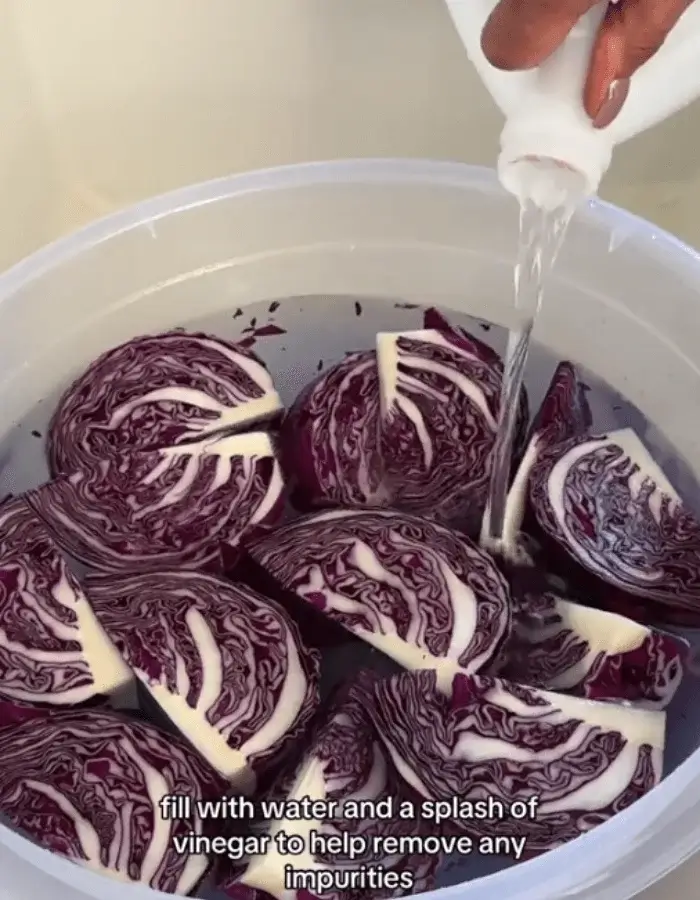Crispy Pickled Red Cabbage
We may earn a commission from recommended products, at no extra cost to you. See Disclosure.
- Chef's knife
- Large mixing bowl
- Mason jar
INGREDIENTS
- 1 pound/450 grams red cabbage
- 1 tablespoon salt
- ¾ cup apple cider vinegar
- ¾ cup sugar
- 1 cup water
- ½ teaspoon black peppercorns
- ½ teaspoon yellow mustard seeds
- 2 cloves garlic, peeled and smashed
- 1 bay leaf
INSTRUCTIONS
- Remove any outer leaves from the cabbage. Cut the cabbage in half through the core. Slice one half finely into thin shreds using a sharp knife or mandoline, then place the shredded cabbage in a large mixing bowl. Sprinkle with the kosher salt and toss well to combine. Let sit for 20 minutes to soften slightly.
- Meanwhile, in a medium saucepan, combine the apple cider vinegar, sugar, water, black peppercorns, mustard seeds, garlic, and bay leaf. Bring to a simmer over medium heat, stirring occasionally to dissolve the sugar. Once simmering, remove from the heat.
- Transfer the cabbage to a clean mason jar or glass container, packing it down slightly. Pour the hot brine over the cabbage, making sure all the cabbage is submerged. Discard bay leaf if desired, or keep it for added aroma.
- Let the mixture cool at room temperature for 20 to 30 minutes, then cover and refrigerate. The pickled cabbage is ready to eat after 1 hour but tastes even better after 24 hours. It will keep in the refrigerator for up to 3 weeks.

FAQ
How long does pickled red cabbage last in the fridge?
Pickled red cabbage can last for up to three weeks in the refrigerator when stored properly. The key to maintaining freshness is ensuring that the cabbage remains fully submerged in the brine to prevent exposure to air, which can promote mold or spoilage. Use a clean spoon each time you remove cabbage from the jar to avoid contamination. Over time, the flavor of pickled red cabbage will deepen and intensify, often improving after the first 24 hours. If the brine becomes cloudy, has an off odor, or shows visible mold, it’s safest to discard the batch and make a fresh one.

Can I use other types of vinegar for this recipe?
You can use other types of vinegar for pickled red cabbage, though the flavor profile will change depending on the variety. Apple cider vinegar offers a balanced sweet-tart flavor and is a popular choice for its mildness. White vinegar will give a sharper, more acidic bite. Red wine vinegar adds depth and color, complementing the natural hue of red cabbage. Rice vinegar can offer a subtle sweetness, especially in Asian-style variations. Balsamic vinegar is not commonly used due to its syrupy consistency and strong sweetness, but a splash can be added for complexity. Always use vinegar with at least 5% acidity for safe pickling.
Why is my pickled red cabbage too soft?
Pickled red cabbage can become too soft if it is over-salted, over-brined, or sliced too thinly. Excessive time in hot brine can also cause it to lose its natural crunch. To retain texture, slice the cabbage to a medium thickness and allow it to sit briefly with salt before pouring the brine. Let the brine cool slightly before pouring it over the cabbage, rather than using it while boiling hot. Another tip is to use fresh, firm cabbage, as older or wilted heads will naturally yield softer results.

Do I need to sterilize the jar?
While full sterilization is not mandatory for quick refrigerator pickles like pickled red cabbage, the jar must still be thoroughly cleaned. Wash it with hot, soapy water and rinse well, or run it through a dishwasher cycle. For longer shelf life and to reduce the risk of bacterial growth, some prefer to pour boiling water over the jar and lid or boil them for 10 minutes. This step is especially important if you plan to store pickled red cabbage for more than two weeks. Though fermentation recipes may not require sterilization, clean conditions help preserve quality and safety.
Can I add other spices to customize the flavor?
In addition to standard ingredients like peppercorns and bay leaves, you can add mustard seeds, coriander seeds, fennel, cumin, or crushed red pepper for extra flavor. Whole cloves, allspice berries, star anise, or a cinnamon stick will give it a warm, spiced character, especially suitable for holiday dishes. Fresh additions like sliced ginger, garlic, or chili can also enhance complexity. These customizations won’t interfere with the pickling process as long as you maintain the core balance of vinegar, sugar, and salt in the brine.

